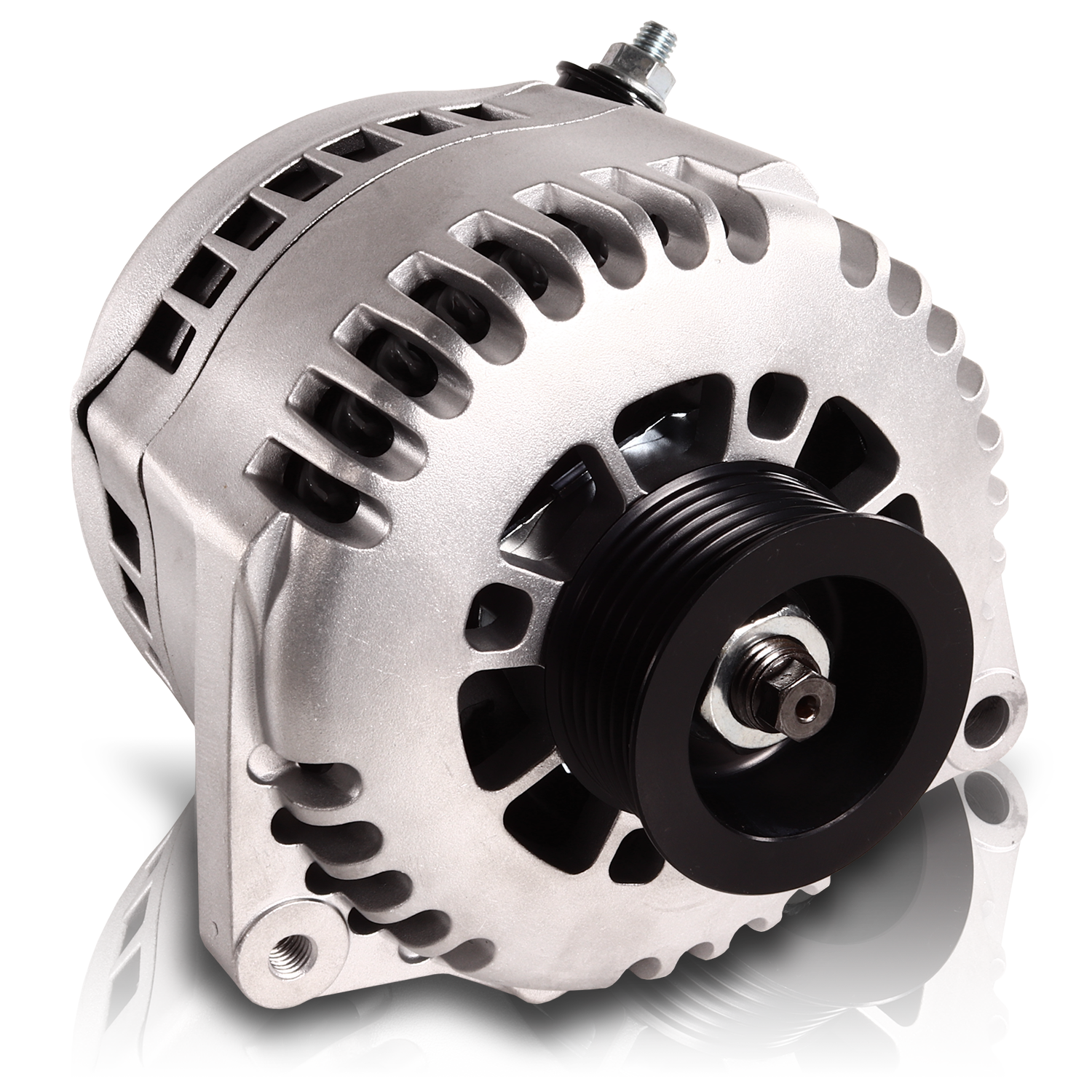
The Next Evolution in Power Delivery and Efficiency
6-phase high-amperage alternators are the cutting edge of modern charging technology — offering smoother output, increased efficiency, and extreme amperage capacity. Unlike traditional 3-phase alternators, these units feature six separate stator windings, allowing for more consistent voltage, lower heat generation, and quieter electrical operation — even under extreme load.
These alternators are engineered for the most demanding electrical environments: competition audio systems, emergency vehicles, commercial fleets, and heavy-duty off-road rigs.
🧠 How 6-Phase Alternators Work
Standard alternators use a 3-phase stator, generating three alternating currents (AC) which are then converted to direct current (DC). A 6-phase alternator, on the other hand, has two overlapping 3-phase stators working together — essentially doubling the frequency and smoothing out the current.
This design delivers:
- More pulses per revolution = Smoother and more stable DC output
- Lower diode stress = Cooler and more reliable operation
- Reduced electrical noise = Ideal for sensitive electronics (audio, communication, medical)
🏆 Key Benefits of 6-Phase High-Output Alternators
✅ Massive Amperage Capacity
Often rated from 300A to 500A+, making them perfect for extreme applications.
✅ Superior Voltage Stability
Handles rapid load changes without sagging voltage — even during heavy amplifier bass drops or winch pulls.
✅ Cooler Running Temperature
Less stress on components like the rectifier and windings, extending alternator life.
✅ Quieter Electrical System
Less ripple and interference — ideal for car audio, radio systems, and mobile electronics.
✅ More Efficient Charging
Provides better output at both idle and high RPMs — crucial for vehicles that run accessories even when idling.
🛠️ Best Use Cases
- SPL Competition Audio Vehicles
- Off-Road Builds with Winches, Compressors, and Lighting
- Emergency & Fire Response Vehicles
- Mobile Medical or Command Centers
- Commercial Utility Trucks & Fleets
- Luxury and Show Builds with Heavy Electronics
⚠️ Considerations and Limitations
🚫 Higher Cost
More complex winding and rectification systems make them more expensive than standard high-output alternators.
🔧 Wiring Upgrade Required
Most setups need the Big 3 Upgrade, fused distribution blocks, and large-gauge wire to handle the output.
🧲 Not Always Plug-and-Play
Some may require modified brackets, pulleys, or custom mounts — depending on vehicle model and alternator brand.
📉 Overkill for Light Use
Unnecessary if your vehicle has low to moderate electrical demands (e.g., basic sound systems or stock lighting).
⚙️ Typical Specs
- Output Range: 300A to 500A+
- Idle Output: Often 180A+ at 800 RPM
- Rectifier: 12- to 18-diode high-amp assemblies
- Cooling: External fans or internal dual-fan design
- Regulation: Internally regulated or programmable external options
- Weight: Typically heavier than standard units due to larger windings
🧩 Summary: When Only the Best Will Do
6-phase high-amperage alternators are not for every build — but for serious electrical demand, they’re virtually unmatched. Whether you’re competing, operating critical equipment, or simply pushing your vehicle’s electrical system to its limits, these alternators offer the efficiency, stability, and brute power needed to keep everything running smoothly.
💬 Pro Tip:
Always pair a 6-phase alternator with a quality battery bank, upgraded wiring, and voltage monitoring tools to maximize performance and system safety.


